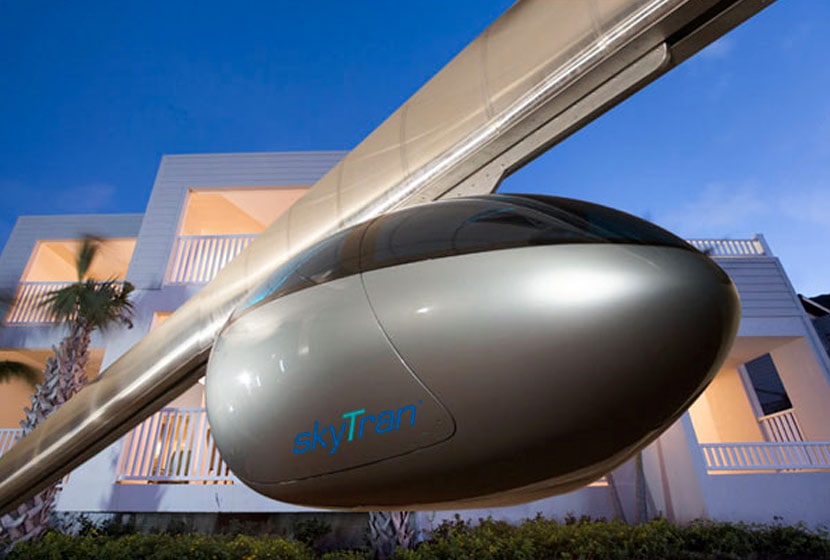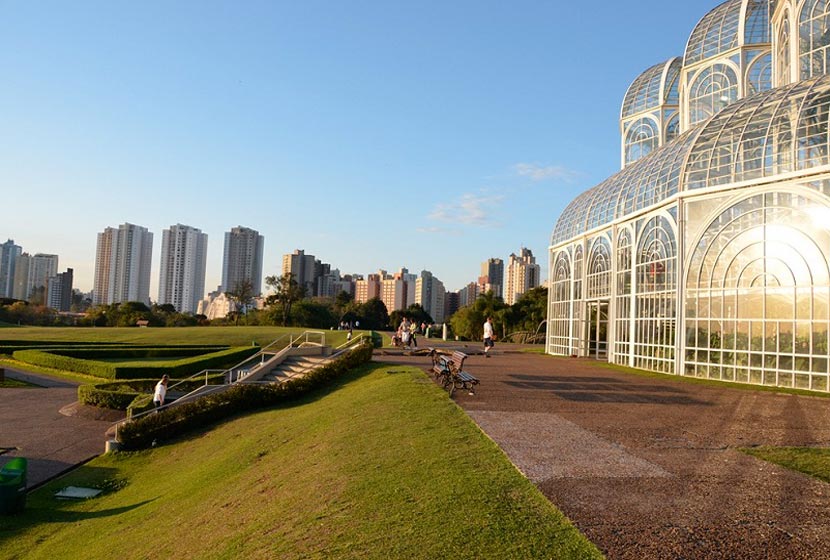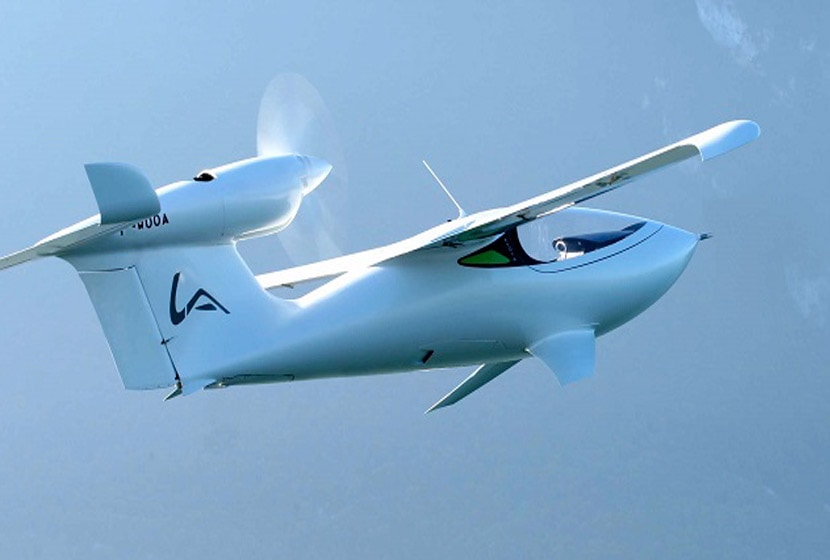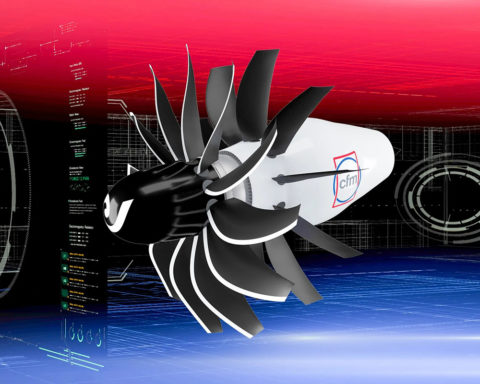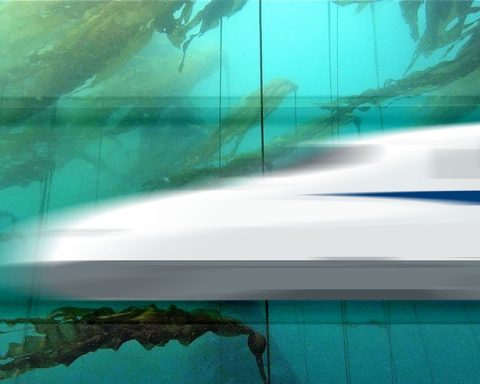Tel Aviv va bientôt accueillir un nouveau système expérimental de transport urbain aérien, le Skytran, développé par la société SkyTran, basée au centre de recherche de la NASA à Ames en Californie et qui ambitionne de révolutionner les déplacements urbains.
Quand la réalité dépasse la fiction
Skytran a largement dépassé le cap du projet (annoncé il y a quelques années déjà) et prépare son avènement pour 2015 dans diverses villes du monde dont Tel-Aviv.
En effet, Tel-Aviv compte quelque 410 000 habitants qui, pour la plupart, empruntent leur voiture tous les jours, créant ainsi un trafic intense. A de nombreuses reprises, les autorités de la ville ont incité les citoyens à utiliser l’alternative du vélo notamment grâce au système de location vélib, mais cela n’a pas suffi à résoudre le problème. La municipalité a également envisagé le service AutoLib a l’instar de Paris mais cela ne suffira pas ; alors le tramway du futur est sans doute la solution.
C’est le dernier-né du centre de recherche de la Nasa : de petites cabines suspendues à un rail et évoluant grâce à un champ électromagnétique. C’est une sorte de tramway aérien utra-rapide et novateur qui ressemble aux « œufs » des pistes de ski. Un rail magnétique au dessus du sol (des aimants dans le véhicule créent un champ magnétique autour de la bobine de métal à l’intérieur du rail) transportera les passagers sur des nacelles de deux ou quatre personnes à 100km/h mais son système de propulsion peut atteindre les 250 km/h.
Grâce à des systèmes de garages intermédiaires et à des rails de déviation, les voyageurs effectuent des trajets directs, sans arrêt, jusqu’à la station de la destination choisie.
La première phase du projet mettra en place un rail de 10 km reliant le quartier d’Atidim à Tel-Aviv au port de Jaffa, puis une installation devrait voir le jour à Netanya et une autre autour du nouveau parc naturel Ariel Sharon. Le système utilise très peu d’énergie et pourrait être entièrement alimenté par des panneaux solaires.
Des programmes informatiques de pointe seront aux commandes du système et les voyageurs auront la possibilité de réserver leurs places avec leurs smartphones ; une fois à l’intérieur de la nacelle, ils choisiront leur destination à partir d’une console de bord.
Le coût du projet s’élève à 7 millions de dollars par km contre 75 millions pour un tramway normal et 20 millions pour une voie de bus. De plus, les coûts de maintenance seraient remarquablement bas.
«Notre objectif est de construire un projet pilote afin que nous puissions faire d’Israël le centre mondial du skytran, » explique Jerry Sanders, le PDG de la société en charge de la construction du skytran. «Nous proposons l’offre de transport la plus sophistiquée sur le marché et aussi la moins chère, la plus verte et la plus efficace», affirme-t-il.

La construction du Skytran débutera dans trois mois à Tel Aviv.
(Source : IsraelValleyNews – 26 juin 2014)
Strasbourg, première ville française à opter pour le Skytran
 D’autres villes dans le monde se sont aussi intéressées au Skytran ; notamment Strasbourg pour qui le Skytran semble être une solution parfaite « pour repenser les extensions du réseau, desservir les quartiers les moins nantis, décongestionner les routes encombrées comme la route de Schirmeck ou encore développer des dessertes rapides et pratiques pour le centre ville pour rallier la gare à tous les centres d’intérêt ». L’ensemble étant conçu dans une logique de développement de la multimodalité.
D’autres villes dans le monde se sont aussi intéressées au Skytran ; notamment Strasbourg pour qui le Skytran semble être une solution parfaite « pour repenser les extensions du réseau, desservir les quartiers les moins nantis, décongestionner les routes encombrées comme la route de Schirmeck ou encore développer des dessertes rapides et pratiques pour le centre ville pour rallier la gare à tous les centres d’intérêt ». L’ensemble étant conçu dans une logique de développement de la multimodalité.
Le premier tronçon serait une boucle de 8,5 km permettant des dessertes depuis la gare de Strasbourg vers les différents centres d’intérêt, notamment pour les visiteurs et les touristes. On notera six points de correspondance avec l’actuel réseau de Tramway.
Après le premier tronçon au départ de la gare, les premières réflexions pour le déploiement du réseau Skytran se présentent sous forme de plusieurs branchements pour desservir les quartiers les moins nantis en transports en commun ainsi que les grands axes engorgés par la circulation. Reliées par un point central, les différentes lignes du réseau de transport de Strasbourg semblent se prêter à une arborescence en toile d’araignée. Cette structure potentielle est considérée comme idéale pour assurer des dessertes rapides entre tous les quartiers de la ville.
Le coût de construction de ce premier tronçon est estimé à 59,5 M€. À titre de comparaison, notons que le budget prévu pour l’extension de 2,7 km du tramway est de 120 M€. Avec plus de 44 M€/ km, le Skytran est 6,3 fois moins cher que le Tramway.
L’idée du Skytran semble faire d’autres adeptes, notamment Alain Juppé, maire de Bordeaux, qui envisage de mettre en place ces navettes suspendues, pour éviter les embouteillages et limiter la pollution.
La ville de Toulouse quant à elle aimerait se positionner comme site industriel : Jerry Sanders, le PDG de la société américaine Skytran affiliée à la Nasa, a révélé à La Dépêche du Midi ses intentions concernant l’implantation d’une usine à Toulouse. Car pour fabriquer ces capsules, il faudra bien une unité de fabrication…
Mais qui ne rêverait pas d’une telle alternative aux transports urbains…

